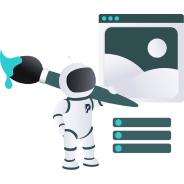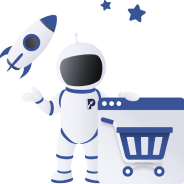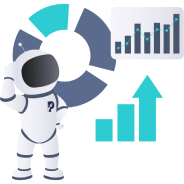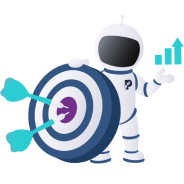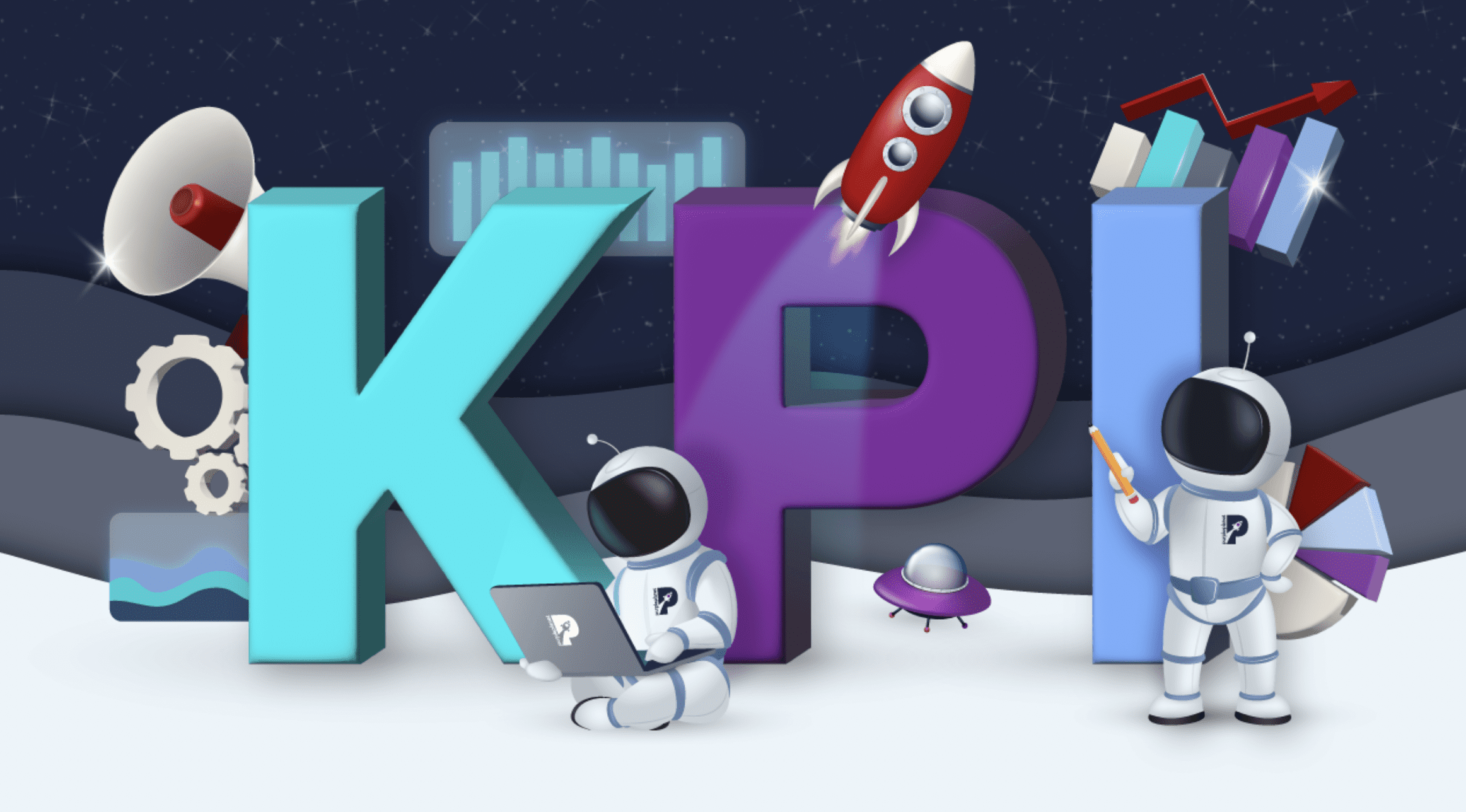

10 E-Commerce KPIs You Should Track
Every successful e-commerce owner or marketer knows that raw data drives the best business decisions. KPIs are both savvy and time-efficient. But which e-commerce KPIs should you be looking at for best results?
If you run an e-commerce business, you’ll know it can be extremely busy and time-consuming. At times, you’ll probably feel like you need eight heads to handle the many tasks and issues that are thrown at you.
Unfortunately, these numerous tasks can take you away from the heart of your business: its performance.
Luckily, things can be simplified with Key Performance Indicators (KPIs). KPIs are a brilliant way to stay on top of your business’s performance. They give you the raw and honest data that drives the most prudent business decisions and save you time.
Once you can recognise what the figures mean at a glance, you’ll be fully in tune with how your business is doing.
KPIs will help you identify where failures (and successes!) are rooted. Plus, the specificity that KPIs offer means that you’ll know exactly where to look if a change is needed.
The KPIs a business chooses to focus on will differ depending on its unique position and goals.
Although we’ll be discussing many important KPIs in this article, perhaps the most indicative of your site’s overall performance is net profit.
Net profit = total revenue – total expenses
However, this isn’t very specific. So, let’s get into the main 10:
Conversion Rate
Of course, your primary goal when a user visits your site is for them to become a buyer. At the very least, you’ll want them to qualify into a lead. Depending on your business and its goals, you’ll think of different things as conversions. Here are some things you might consider as conversions:
- A user signs up for a mailing list
- A user makes a purchase
- A user creates an account with you
- A user signs up for your loyalty program
Depending on what you want to measure, there’ll be different metrics you could look at. For example, you might want to look at conversion rate by traffic source or conversion rate by device type.
Looking at conversions across device types can be highly useful. This metric might indicate that your mobile interface isn’t working as it should, which is a reasonably straightforward issue to tackle.
Furthermore, analysing your conversion rate by traffic source will help you know which way you succeed in driving traffic. It might be paid ads, social media, organic search, or referrals that are more effective. Once you know this, your marketing efforts can be focused on something you’re confident is likely to work.
The average conversion rate across the globe is 1-3% and achieving this can significantly affect your business’s profits.
Conversion rate (%) = (number of conversions / number of visitors) x 100
Bounce Rate
How quickly are users leaving your website after visiting a single page?
If this is happening quickly (a high bounce rate), it’s clear that although your visitors are being enticed toward your site, they’re not resonating with the page they’ve landed on.
This issue is difficult since there are so many reasons why a visitor hasn’t resonated with your landing page.
Your website’s bounce rate is highly instrumental in its SEO performance – not just sales. So, this KPI is doubly important.
Some ways businesses reduce their bounce rates include:
- Improve page loading speed
- Ensure content is relevant according to different visitors
- Insert an attractive CTA on the landing page
It might also benefit you to look at pages per session when considering bounce rate. This often-overlooked metric can arguably offer more insights than merely looking at bounce rate. The pages per session metric indicates how long a customer stays at your store, looks around, and explores your brand.
If visitors have remained on the homepage, they’ve probably discovered a reason to leave the site. However, if they’ve gone through several pages, they’re probably very interested in what you’re offering.
Customers who have a high page per session rate are much more likely to make a purchase. To maximise these instances, you should make sure there are more attractive suggestions for the visitor to click on next. This could mean offering new or related products.
Bounce rate = number of single-page sessions / total number of sessions
Cart Abandonment Rate
Any owner of an e-commerce business will have noticed that some customers will add products to their cart, but they won’t complete the order.
This issue can be highly frustrating as the site visitors were so close to making a purchase but were put off for some unknown reason.
You can’t always know for sure what it is, but here are some reasons why people abandon their carts:
- The website asked them to create an account
- There were hidden costs such as shipping or taxes
- The checkout process was overly complicated
- The website didn’t seem trustworthy enough for a visitor to share bank details
- The website crashed
- The return policy was unsatisfactory
Here are some ways you can reduce the problem of abandoned carts:
- Allowing visitors to checkout as a guest and generally simplifying the checkout process
- Eliminating any surprise fees
- Using email retargeting
- Ensuring there are no technical issues in the checkout process
- Change your return policy
Cart abandonment rate = total number of completed transactions / number of initiated sales
Rate of Returning Customers
This is the rate at which former buyers return to purchase more or other products or services from your business.
If your RORC is above 35%, you’ll be seeing a huge increase in revenue. However, a rate of between 20-and 30% is still admirable.
Returning customers should be valued highly and incentivised to continue buying from your business. If your company sells products that expire or sells a variety of products or services, you’ll want existing customers to return and buy more of the same or different.
Here are some ways you can increase this rate:
- Notify them of new or updated products
- Create a reward scheme
- Add them to a mailing list that offers loyalty discounts
- Check in with them after a certain amount of time when they’ve potentially used up your product and need a new one
In this regard, you’ll also want to look at the number of email and notification opt-ins. According to some experts, 92% of first-time site visitors aren’t ready to make a purchase. So, there’s got to be a way to make sure they come back to your site. Getting visitors to sign up to a mailing list enables to you reach out to them once they’ve left your site.
Looking at your opt-in rate will let you know how many potential customers you have at your fingertips. If you want to increase the number of users on your mailing list, here are some ways to do so:
- Adding permanent banners and sidebars on your site pages with opt-in CTAs
- Create a dedicated landing page
- Use slide-ins throughout the browsing process that offer discounts for opting-in
Rate of returning customers (%) = (number of return customers / total number of customers) x 100
Net Promoter Score
They say that happy customers will tell their friends whilst unhappy customers will tell the world.
Unfortunately (and fortunately!), this is the case. Customers can be a huge source of advertising – in both negative and positive ways.
This is a free method of advertising that, if fueled by a good experience with your company, can positively impact your brand awareness and increase traffic to your site.
Your customers’ willingness to recommend you to a friend is called the net promoter score, graded from 0 to 10. Some experts say that this score can account for between 20 and 60% of a business’s organic growth rate.
Given the power of customer satisfaction, it’s essential that you’re up to date with this metric and work towards improving it if it’s low. You can do this by responding to feedback, sending out suggestion forms, and actively changing what you can if customers mention a problem.
Obviously, having excellent products and services goes a long way in improving this score. But no company is perfect. You can combat this by handling complaints and feedback in the best way possible.
Average Profit Margin
Working out which products generate small and big profit margins is key for every business owner. By comparing the profit margins of products you sell (or would like to sell), you can identify which are the most lucrative.
This KPI is key in e-commerce since it represents the black and white truth of profit or loss across your business’s entire product range.
Customer Acquisition Cost
How much is it going to cost to acquire one new customer? Once you know this – you’ve got your customer acquisition cost (CAC). This figure will be an essential factor whenever it comes to budgeting for marketing and advertising.
Your CAC will also be intertwined with your average order value (AOV). If your AOV is $15, but it costs $20 to acquire a new customer, you’ll be losing money. The relationship between these two KPIs will be fundamental in working out prices and will be particularly important in e-commerce businesses selling low-margin products.
Customer acquisition cost = cost of customer acquisition / customers acquired
Similar to your CAC is the cost per acquisition (CPA). This KPI includes the cost of acquiring non-paying users and leads as well as paying customers. CPA is a brilliant KPI to track if your business builds awareness through free samples and gated content.
When thinking about customer acquisition, you’ll also want to consider traffic source to better understand which methods are more successful. Plus, conversion by traffic source.
These KPIs will really help you get into the nitty-gritty and push you towards getting the most out of your acquisition methods. After all, if your AOV is lower than your CAC, you’ll want to look at which traffic sources are most effective.
Cost per acquisition = costs of conversion acquisition / number of conversions
Customer Lifetime Value
Within the e-commerce world, it’s cheaper to retain existing customers than it is to acquire new ones. In fact, some say it costs five times more to acquire a new customer than it does to keep an old one. So, you can understand why it’s financially beneficial to invest in customer retention.
Customer lifetime value is a highly vital KPI for e-commerce companies that shapes customer retention strategies. If you can increase your customer lifetime value, you’ll be securing a revenue stream that can be relied upon throughout your business’s future.
Another relevant metric in this regard is the percentage of returning buyers. This KPI will clue you in on how many converted customers are returning. Given that returning customers are cheaper than new ones, it would be prudent to try to increase your percentage of returning buyers.
Here’s how you can do it:
- Keep customers in the loop about new items, updated products, and discounts.
- Make your incentives time-sensitive.
- Ensure your mailing list, push notifications, retargeting methods, and social media channels are optimised.
Average Order Value
This KPI is one of the most important factors in helping e-commerce businesses make data-driven decisions. Through helpful insights into customer buying patterns, a company can come to a conclusion about its customer acquisition costs.
If new customers are spending less than what it costs you to acquire them, you’re technically at a loss. Ideally, you want to keep the acquisition cost per customer lower than your average order value.
You can improve your average order value by increasing the prices of products (although your existing customers won’t appreciate this), encouraging buyers to add multiple products to their baskets, and generally improving the checkout experience.
Average order value = revenue / total orders
Churn Rate
Unfortunately, sometimes customers aren’t satisfied with your products or services.
Your company’s churn rate indicates the number of customers that discontinue their subscription with your business after a specific time period. If this number is low – congratulations! – it means your customers are very happy.
For SaaS businesses, the average churn rate falls between 2.9% and 8.5%.
It’s essential that your e-commerce business provides exceptional customer service and that the products or services on offer are value for money. If not, customers with poor experiences might leave negative feedback on public forums and stop giving you their custom.
Other KPIs
If your e-commerce company sells its products through a third party (be it Amazon, for example), you might find it valuable to look at product performance metrics. Working out how specific products are performing means you can understand your brand within that retailer at a deeper level.
From this, you’ll be able to make well-informed decisions on stock, ordering, prices, advertising, and ultimately whether that third party retailer is right for you.
Digital marketers should also keep an eye on the return on ad spend (ROAS), which sounds similar but is different to the customer acquisition costs. ROAS is more specific than CAC since it focuses purely on the revenue generated by adverts.
If customers come from a paid source, calculating the ROAS can provide you with a monetary value since it considers purchase value. With this, you’ll be able to use a definite figure to judge whether your ad campaigns are worth their cost.
ROAS = total sales / total ad spend
Final Thoughts
It seems that KPIs hold the answers to all of your e-commerce business’s questions!
It’s true; keeping a regular eye on your KPIs will ensure you can stay on top of any sticky issues and keep your customers happy. You’ll find that once you start valuing KPIs for business insights, you’ll be able to make well-informed decisions about your marketing, spending, and site user experience.
KPIs are so helpful that it can sometimes become irresistible to check them daily. We don’t see anything wrong with that, though! Skimming through your daily KPIs can be quick and keep you in tune with your company’s performance.
Purpleplanet has been selected among the Top eCommerce Web Design Companies by Designrush



